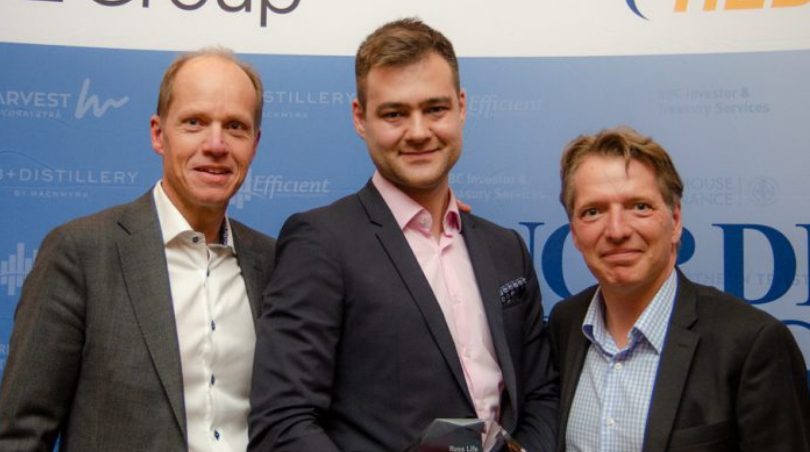The Micro versus Macro view in life settlements
23 March 2021 | Christopher Faille
Access original article here
Life settlement investing, which has had a rocky road since its origins in the 1980s, has settled into a pattern.
At the top of the value chain stand major investment firms such as Apollo and Blackstone, which buy and sell life insurance policies in large blocks. Breaking that mold is RessCapital AB, a Swedish firm that manages life settlement investment funds. By getting granular, analyzing and buying at the level of the individual policy, not a bloc, the firm has been able to achieve compelling returns.
The firm’s assets under management have now reached $245 million and it has also recently announced the hire of Markus Biamont, formerly of Nordea Bank, who will work in the policy sourcing selection process.
RessCap aims at an annual net return of 7% in USD. Over the last five years, it has had a volatility of around 4%. Money invested in RessCap in April 2015 is now worth 30% over the principal. By way of comparison. Money invested in the HFR Global Hedge Fund Index would be very close to the break-even point now, a 0% return. The S&P 500 has a better return than RessCap (40%), but also has had a good deal more volatility.
RessCap’s micro-approach may owe something to the founder’s experiences. Years ago, Founder and Managing Director, Jonas Martenson, worked at what he calls a “niche options market maker” in Switzerland, which required looking at opportunities at a micro scale. He has since worked at several of the great investment banks in London, where he first encountered the life settlements market while at Merrill Lynch. More intriguingly, perhaps, he has in recent years been a senior advisor for Endurance Capital Group, which makes long-term investments in Vietnamese mid-cap companies.
At Endurance, the emphasis is on identifying overlooked, misunderstood and undervalued companies with a preference for consumer-driven sectors. From such sources one can see how Martenson became accustomed to hunting for treasure not above or beneath but within the grains of sand on the financial world’s beach.
“We are very selective. We buy only 3-4% of the policies we look at. One of the key reasons is we look for sellers with longer life expectancies. If a fund loads up on sellers with a life expectancy of only two to three years, it is taking on a lot of risk. But we look to those with a life expectancy in the neighborhood of a dozen years,” said Cristina Lugaro, RessCapital’s institutional sales director. “Prediction is more reliable there. As a related point, the others in this space typically buy large portfolios of settlements. We buy at the level of single policies, which allows for a much more granular understanding of our risks.” As a consequence of their selectivity on this level, roughly three fifths of the policies in their portfolio are issued by companies rated A+ by AM Best, another one-tenth are from those rated A++.
On the subject of life expectancy, 53% of the policies in the portfolio were issued to insured persons with a life expectancy of 10 years of more [11% at 10 to 11 years, 26% at 12 to 15 years, and 16% more than 16 years.
The industry is commonly criticized as one that profits from the misfortunes of others, of the sellers of life insurance policies. In reaction to such criticisms, at least on behalf of RessCap, Martenson said, “Retirees are not selling their insurance policies because they are needy. The customers are upper middle class or quite wealthy. They are selling because they don’t need the policy any longer — the beneficiary, their children for example, may have grown up and may have become quite successful — and because they see an opportunity. Without this opportunity, they may simply stop paying premiums, and receive no return on the premiums they might have been paying for twenty years.”
The US Government Accountability Office (GAO) studied the industry extensively near the end of the first decade of this century. The GAO found that over the period 2006-09, policy owners who sold their policies in the secondary market received a total of $5.6 billion more than the surrender value placed on those same policies by the insurers.
The “life settlement” industry may be said to have had its source in the AIDS epidemic of the 1980s, and what were then called “viatical” settlements. Thousands of AIDS sufferers cashed in their policies at a time when there was no effective treatment, so their life expectancy was predictably brief.
In 1994, the Viatical Association of America developed as a trade association for the buyers of such policies. The legislatures of various states in the United States began enacting a regulatory act devised by the National Association of Insurance Commissioners. By the end of the second millennium, treatment of AIDS had improved, the life expectancies of those diagnosed with the condition were less predictable, and viaticals in the original sense became riskier.
But at this time the industry morphed into something else, the life settlement industry. The typical customer of this industry (that is, the typical seller of a life insurance policy) was healthy, and at or nearing retirement age. The buyers’ calculations were accordingly more long-term than those of the earlier viatical settlements.
So far, our story has been of a buy side developing and becoming more generalized. But a twist is coming. Many very large well-capitalized institutions became involved in the business during the early years of the 21st century. Then came the global financial crisis of 2008, which forced the largest of the survivors to refocus on their core. Their life settlement assets were deemed (by the institutions themselves and/or their regulators) not to be core. They were sold, and the new movers-and-shakers in the life settlement world became specialists. After a period in which the sellers/customers became a more generalized group came a period in which the industry itself became more specialized.
That in turn may be said to have prepared the way for RessCap’s own emphasis on the granularity of their research.
One of the chief risk factors in this industry is longevity. If people live a lot longer than the models indicate they ‘should,’ then RessCap is of course on the hook for the insurance premiums for more years than it had expected. As part of a pitch to potential investors, Martenson and Lugaro can of course remind them that this risk is not at all correlated with the typical financial risk factors than are involved in investing in equities or fixed income.
There is also counter-party risk to consider. An insurance company could experience a blow-up and default on a settlement. But this doesn’t keep the executives at RessCap awake at night. They point out that they only purchase policies that had been issued by U.S. life insurance companies with a minimum rating of A-. And they are diversified. Their policies have been issued by approximately 50 different insurers.
What is even more reassuring, in Martenson’s words is: “In the history of the U.S., there is no known case where policyholders have not received death benefits, according to AM Best. We buy investment grade only and are willing to take on that [counterparty] risk.”
About Resscapital
Resscapital AB is an alternative investment fund manager (AIFM) authorised and regulated by the Swedish Financial Services Authority (Finansinspektionen).
We have since 2011 bought a diversified life insurance portfolio on behalf of Ress Life Investments, which is listed at NASDAQ Copenhagen. Proprietary portfolio management systems and pricing models have been developed. The company also collaborates with independent medical underwriters specialising in senior mortality.
The management team has complimentary backgrounds and international experience from having worked at major banks, institutional investors and hedge funds. The board of directors consists of both successful entrepreneurs and senior managers with extensive experience from the financial industry.
See here for more news from Resscapital AB
Attractive Long-Term Returns
Ress Life Investments A/S purchases US life insurance policies in the secondary market. The company owns a diversified portfolio and policies are issued by over 50 highly rated US life insurance companies. The investment objective is to provide attractive uncorrelated returns in USD over the long-term. Ress Life Investments is listed at Nasdaq Copenhagen since 2015.
Attractive risk-adjusted return – the target return is 7% per annum in USD without any leverage.
Low volatility – a well-diversified life insurance portfolio offers investors stable and attractive risk-adjusted returns. Monthly historical volatility during the last five years is 4%.
Risk diversification – the return profile of the life insurance portfolio is characterised by low correlation to other asset classes, which makes the strategy attractive for investors seeking risk diversification.
Exchange-traded – the company is listed at NASDAQ Nordic and a market-maker provides daily prices.
Ress Life Investments A/S is a limited liability company incorporated in Denmark. The company is an alternative investment fund (AIF) managed by Resscapital AB, a limited liability company incorporated in Sweden. Resscapital AB is authorised as an alternative investment fund manager (AIFM) and supervised by Finansinspektionen, the Swedish Financial Supervisory Authority.
The depositary for Ress Life Investments A/S is Artha Fondsmaeglerselskab A/S. The administrator is Citco Denmark ApS, which is part of the Citco Group. The independent board consists of four members with extensive experience from the financial markets. Ress Life Investments A/S is audited annually by Deloitte.
Ress Life Investments A/S is admitted to trading and official listing on NASDAQ Copenhagen. The company’s short name is RLAINV, ISIN DK0060315604. Current share prices can be found under the segment – Alternative Investment Funds on NasdaqOMXNordic.
Danish and Swedish retail investors and professional/accredited investors may also subscribe for shares on a monthly basis at the company’s current net asset value per share.




